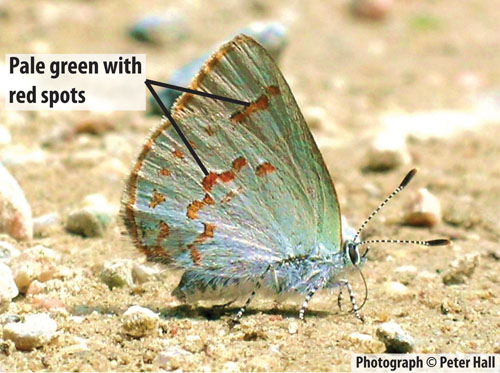Early Hairstreak (Erora laeta)
Description: The uppersides of the females are bright blue with black margins, the uppersides in males are entirely dark grey except for a small blue patch along the margin of the hindwing. The underside in both sexes is turquoise, with conspicuous orange bands and a narrow orange margin. No other species in the Maritimes has a similar underside wing pattern. Wingspan: 21 to 24 mm.
Maritime Distribution: Rare and local throughout New Brunswick, Prince Edward Island, and Nova Scotia. For Atlas results click here.
Provincial Ranks: NB: S1. NS: S1. PEI: S1.
Flight Period: Mid May to mid June.
Host Plant: Larvae feed on the nuts of American Beech (Fagus grandifolia). Early stages feed on the husk, while later stages bore into the seed. The seeds of Beaked Hazel (Corylus cornuta) may be an alternate food source.
Notes: The French name, Lutin mystérieux, is rather fitting for this poorly understood butterfly. It was long thought the larvae fed on the leaves of American Beech. The use of beech nuts as a food source was discovered in New Brunswick by Dr. R. Webster and larvae were later found on beech nuts by Dr. A. Thomas near Stanley, N.B. This explains why it is found only in forests with mature beech trees that produce nuts.
It is rarely collected as an adult. However, it may be much more common than thought, as it probably spends much of its adult life in the forest canopy. Most adults are collected on the forest floor where it is occasionally seen seeking moisture along forest trails or visiting flowers of early blooming trees.

